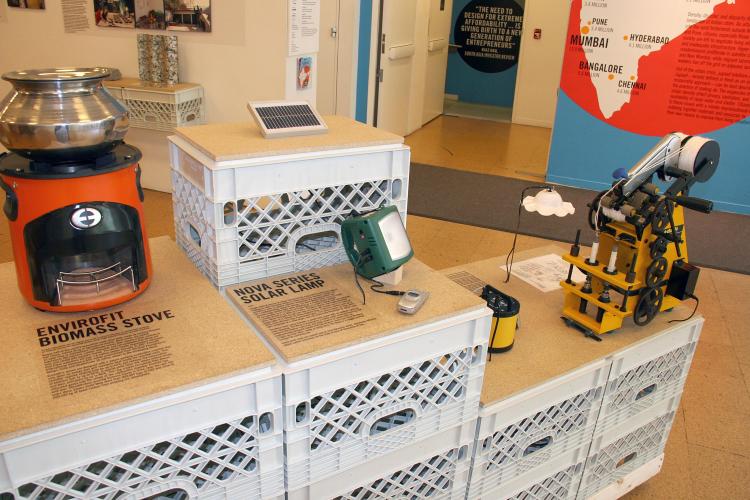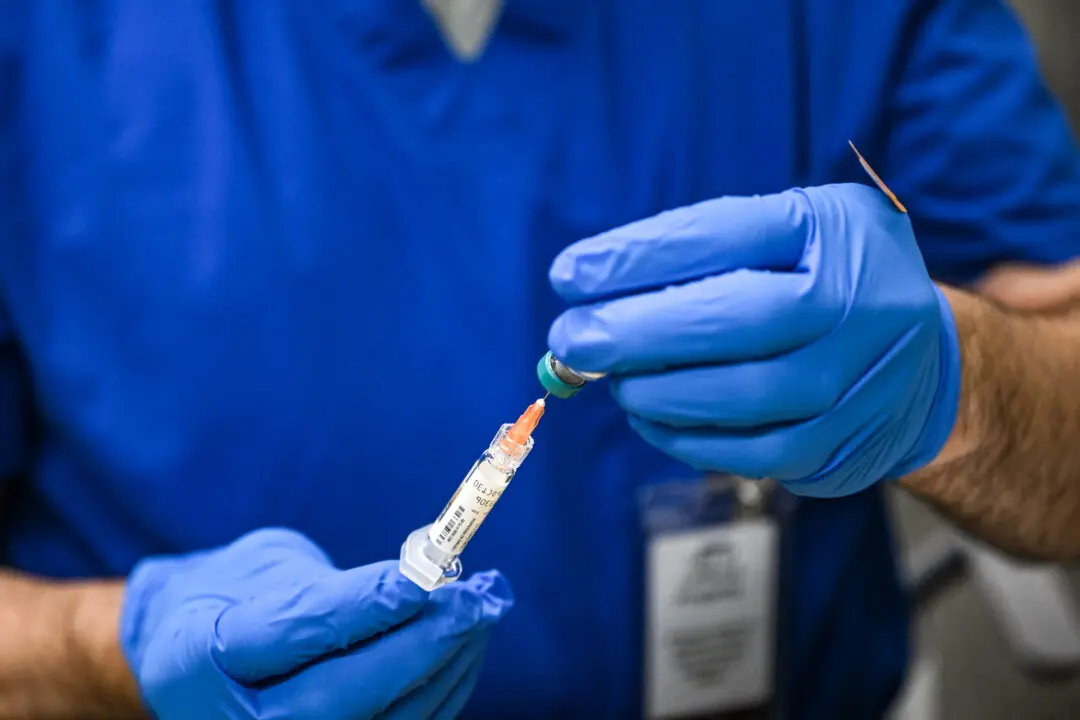NEW YORK—To walk into the Center for Architecture is to visit India in its present state and future possibilities. Cities in India are overcrowded, and the population doesn’t look like it will decrease in the near future.
To combat the various difficulties that arise from overcrowding—food shortages, homelessness, water scarcity, transportation, heating, lighting, and cooking—an approach known as “jugaad” is utilized.
In Hindi, jugaad means technological innovation despite constraints, or in other words, making do with what you have. Local resources and labor and repurposed materials are at the heart of the projects displayed in the Center for Architecture.
A solar energy system provider, Selco, has tackled the problem of lighting by providing solar lighting systems to over 115,000 people, primarily slumdwellers, across the states of Karnataka and Gujarat.
Selco has accomplished this by forming partnerships with banking institutions and low-income citizens to obtain unconventional methods of financing. This has added significance because the solar lighting systems replace unhealthy and expensive kerosene lamps.
Philips Design “Philanthropy Social Empowerment” program addressed death and sickness caused by smoke inhalation from traditional clay stoves in India. Developers added a slotted clay filter and a chimney to the original design. The new model maintains the traditional ease of use and maintenance and has added safety. The stoves are locally produced and distributed.
Transportation is a complex issue for city dwellers in India, particularly for people commuting to work. A coalition of NGOs, banks, corporate firms, and manufacturing organizations is developing a solar-powered rickshaw for commercial output at the same cost as conventional ones, which are powered by bicycles or gas.
In addition to information about enhancing and safeguarding Indians’ lives, the Center has two geothermal wells on display, which are two of the first in New York City. These wells, drilled over 1,200 feet into the bedrock, use ground temperature to heat and cool water, extracting heat from the warmer ground in the winter, and transferring excess heat to the cooler ground in the summer.
They estimate that the geothermal wells will pay for themselves in three years. One of the few cons to this form of alternative energy is the high up-front cost, in this case, about $3 million.
To combat the various difficulties that arise from overcrowding—food shortages, homelessness, water scarcity, transportation, heating, lighting, and cooking—an approach known as “jugaad” is utilized.
In Hindi, jugaad means technological innovation despite constraints, or in other words, making do with what you have. Local resources and labor and repurposed materials are at the heart of the projects displayed in the Center for Architecture.
A solar energy system provider, Selco, has tackled the problem of lighting by providing solar lighting systems to over 115,000 people, primarily slumdwellers, across the states of Karnataka and Gujarat.
Selco has accomplished this by forming partnerships with banking institutions and low-income citizens to obtain unconventional methods of financing. This has added significance because the solar lighting systems replace unhealthy and expensive kerosene lamps.
Philips Design “Philanthropy Social Empowerment” program addressed death and sickness caused by smoke inhalation from traditional clay stoves in India. Developers added a slotted clay filter and a chimney to the original design. The new model maintains the traditional ease of use and maintenance and has added safety. The stoves are locally produced and distributed.
Transportation is a complex issue for city dwellers in India, particularly for people commuting to work. A coalition of NGOs, banks, corporate firms, and manufacturing organizations is developing a solar-powered rickshaw for commercial output at the same cost as conventional ones, which are powered by bicycles or gas.
In addition to information about enhancing and safeguarding Indians’ lives, the Center has two geothermal wells on display, which are two of the first in New York City. These wells, drilled over 1,200 feet into the bedrock, use ground temperature to heat and cool water, extracting heat from the warmer ground in the winter, and transferring excess heat to the cooler ground in the summer.
They estimate that the geothermal wells will pay for themselves in three years. One of the few cons to this form of alternative energy is the high up-front cost, in this case, about $3 million.






